[Evan visits a street art-inspired show, concluding that while street art doesn’t always fit easily into the gallery setting, there’s definitely room for collaboration. — the Artblog editors]
Department of Neighborhood Services at Fleisher/Ollman Gallery brings together work by Philadelphians Isaac T. Lin and Dan Murphy, and West Coast street-art hero Barry McGee. The artists–who have shown together on multiple occasions over the years–take noticeably similar approaches to street art in the gallery setting, harnessing the raw energy and grit from which graffiti is born and utilizing it to inform a more streamlined vision.
From polished aesthetics to pieces seemingly unfinished
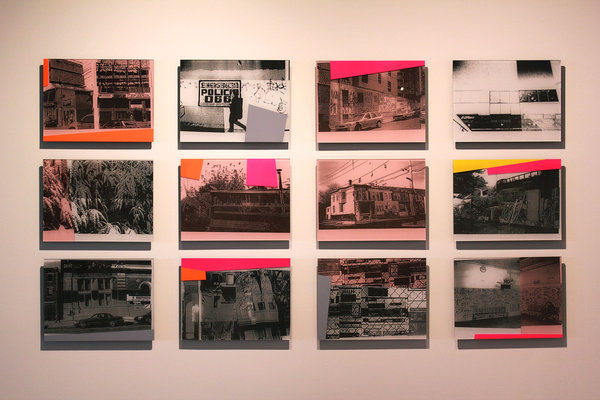
The first works that caught my eye were Dan Murphy’s photocopies of street photographs–decrepit buildings, decaying urban environments, and graffiti artists in the act–mounted with acrylic and highlighted with flat, John Baldassari-like patches of bright color. There is a tension here between the harsher world in the photographs that Murphy champions and its sleek presentation, which fits the gallery aesthetic and the realm of the elite.
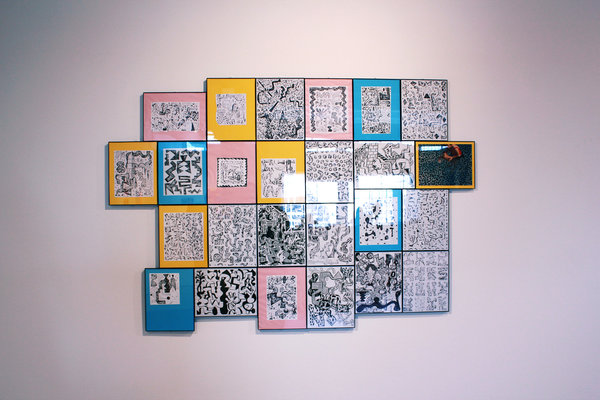
Isaac T. Lin’s work employs a much more handworked aesthetic, although he, too, makes use of photographs as the ground for some of his pieces. Best are his calligraphic and gestural marks over idyllic, bright gradients of color, which call to mind Matisse and ’90s Hawaiian shirts all at once. Less convincing is “From First to Last,” a collection of pen-and-ink-pattern drawings backed by pastel blues and pinks and hung as one piece. The drawings hover uncomfortably between the spontaneity of the street and the control of the gallery, seeming both over- and under-finished.
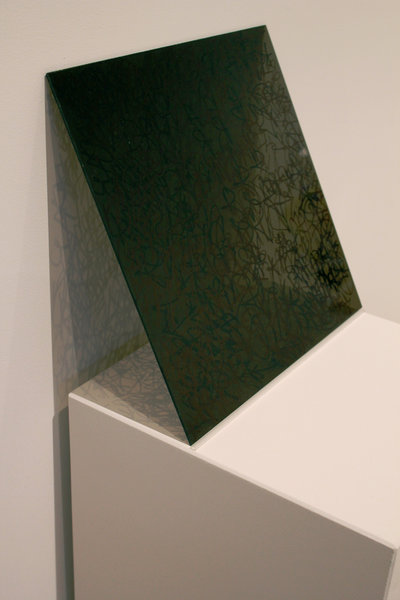
Barry McGee, the most widely renowned member of the show, lives up to his reputation. His work is the most resolved, and succeeds in inhabiting both street and gallery, retaining its grassroots integrity with a keen eye for design. I can sense his discomfort in inhabiting two very separate worlds. His work is playful on the surface, but on a deeper level, it comments on consumerism (his color palettes and patterns are eye-catching and very graphic; almost ad-like) and political absence (the figures in his works appear lost and indifferent).
A conflict of display
I was happy to see one of McGee’s zines included in the show, but disappointed by the fact that it is displayed in so sterile a way, opened to a page and encased in a glass vitrine, the same way that you might see an ancient Korean scroll displayed at the Philadelphia Museum of Art. This seems a betrayal of the soul of the zine, a spirit of barely-controlled chaos stifled by the very thing it rebels against. It would be better to have it on a shelf available for everyone to browse through its pages.
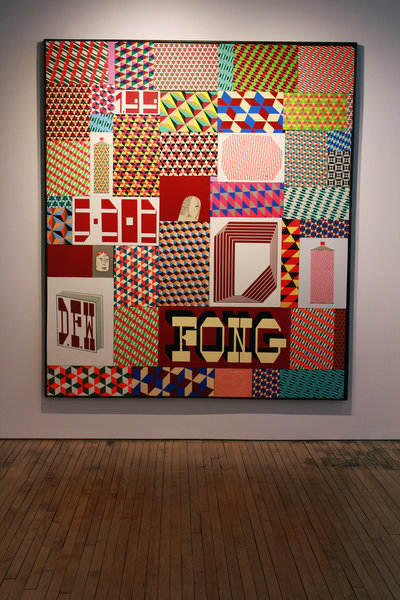
McGee’s most impressive contribution is a large multi-panel painting, “Untitled,” which includes many of his trademark techniques, eye-catching geometric patterns (reminiscent of traditional folk art) with highly stylized text and lighter figures. The figures in the paintings seem to inhabit and experience the noisy panels around them, like we ourselves experience the street–surrounded by pattern, color, signage, and graffiti, but often too visually exhausted to appreciate it.
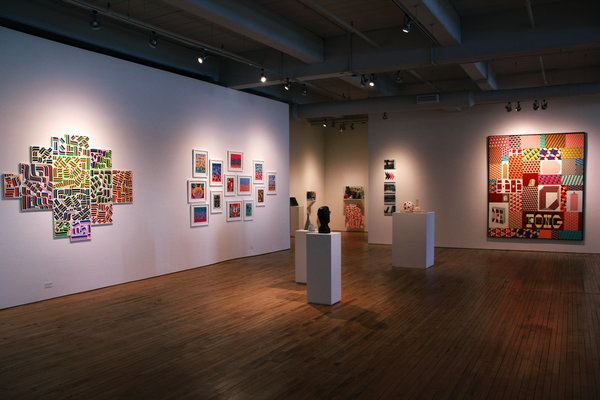
Other pieces in the show, such as McGee’s sculptures and Lin/Murphy’s collaborative sculptures, seem to be too literally trying to bring the street and its “garbage” into the gallery. These literal statements about the gallery world’s indifference to the realities of the city are heavy-handed and fall flat amid more highly-designed and stylized works that carry the same meaning a lot more gracefully.
For a show that attempts to talk about the street in the gallery setting, Department of Neighborhood Services is a valiant effort–not perfect, but encapsulating the integrity and passion that each artist also brings to their work on the street. It is absolutely worth a visit, especially because these three artists have not shown together on the East Coast in far too long.
Department of Neighborhood Services is on view through June 6, 2014 at Fleisher-Ollman Gallery.
Evan Paul Laudenslager is an artist and writer based in Philadelphia. He is a senior in the Visual Studies program at Tyler School of Art, graduating in May 2014.









